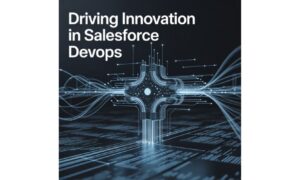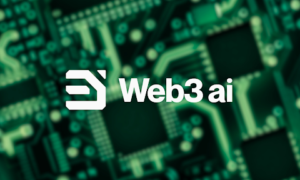Implementing DevOps in large enterprises is no small task. The methodology promises greater efficiency and faster delivery, but organizations hit many roadblocks. These challenges are ones of cultural resistance to legacy systems and require careful planning and execution to overcome.
Cultural Resistance and Silos
Cultural resistance is one of the most common challenges in adopting DevOps within large enterprises. Existing structures of long-standing traditional organizations include development, operations and quality assurance teams working in silos. These divisions create barriers to collaboration, making it difficult to embrace the shared accountability and transparency required for successful DevOps practices. Employees are often hesitant to change, afraid to be fired or have their workflow interrupted. Think of the operations teams that might be worried that they will become less important once more automation is brought into the mix or the developers who still need to be prepared to take over in other departments. This is, most of the time the reason why teams lack trust and alignment.
This requires a culture shift. To make collaboration work, leadership needs to work with cross-functional teams to achieve common goals. To break silos and build trust, you need regular workshops, open communication, and celebrate small successes. Additionally, providing training programs ensures employees understand the benefits of DevOps, making them more likely to embrace the change. Without this cultural alignment, the best tools and strategies won’t work.
Legacy Systems and Infrastructure Constraints
Legacy systems are another significant hurdle for enterprises adopting DevOps. Most of these old systems were created decades ago, and don’t provide the flexibility and scalability that modern workflows demand. They are not easily compatible with the tools and automation solutions that are central to DevOps practices. For example, for industries like banking and healthcare, large enterprises use legacy infrastructure to manage sensitive data. These systems are typically very costly or risky to replace or upgrade because they are so deeply integrated with mission-critical operations. Furthermore, many of these platforms lack APIs or standardized protocols, complicating efforts to integrate them into a DevOps pipeline.
Organizations can phase it to overcome these constraints. Modernizing infrastructure doesn’t need to be all done at once. Enterprises can choose to focus on areas with the highest impact, like containerizing applications or by embracing hybrid cloud to bridge their old and new systems. We can also create an abstraction layer which will allow legacy systems to interact with modern tools in a way that we can slowly transition without much downtime.
Scaling Automation Across the Enterprise
Automation is at the core of DevOps, streamlining repetitive tasks and reducing human error. But scaling automation across an entire enterprise is challenging. Small teams can easily automate processes, but large organizations need help standardizing such efforts across many departments and business units. Tool compatibility is one of the common obstacles. Many times, enterprises will use a mix of software and platforms, and not all of them will support automation out of the box. Also, different departments might prefer different tools, resulting in fragmentation and therefore reduced scalability. For instance, one team might decamp for Jenkins as a continuous integration tool, whereas another goes with GitLab pipelines, causing work to become unstandardized.
Another issue is in resource allocation. Automating anything requires a good amount of upfront investment in tools, training, and infrastructure. If enterprises do not have a clear alignment on priorities, then implementation can be delayed or adoption incomplete. Organizations should establish a centralized DevOps Center of Excellence to scale automation effectively. This team can standardize tools, create best practices, and help departments as they go along. Moreover, small experiments and automation rollouts are initially defined for pilot projects and later expanded as and when automation is tested and improved. Enterprise-wide automation success is only possible with proper governance and a clear roadmap to prevent chaos.
Complexity in Managing Tools and Processes
Managing the vast array of tools and processes involved in DevOps can be overwhelming, especially in large enterprises. In this situation, tool sprawl (too many tools used across teams) often leads to inefficiencies and higher operational costs. Without standardization, there is no consistency in processes, no measure of performance, and no way to know where you can improve. Consider, for example, large enterprises using individual tools for code repositories, testing, monitoring, and deployment. Although each tool has its own purpose, a lack of integration between them means there is a lot of redundant effort and data silos. Furthermore, maintaining multiple vendor relationships along with their associated licensing agreements can be a fiery hell.
This is something that enterprises should concentrate on building a unified toolchain to address this. Tools that fit nicely together make the most simple workflows. An Infrastructure as Code (IaC) approach is another key strategy here, helping teams maintain consistency of environment at each and all stage of development and production. Regular audits of tools and processes can also help point out duplications and places for improvement. By streamlining their toolsets and optimizing workflows, enterprises can reduce complexity, improve collaboration, and maximize the benefits of DevOps practices.
Conclusion
Implementing DevOps in large enterprises comes with unique challenges, from cultural resistance to legacy infrastructure and tool sprawl. Yet, these can be overcome with well-thought-through approaches such as encouraging collaboration, modernizing in small pieces, and scaling automation. By addressing these challenges head-on, enterprises unlock the potential of DevOps to improve efficiency, enhance collaboration, and accelerate innovation on a large scale. It is a long trip to self-realization but if the effort is to be repaid at all, then there has to be patience, commitment and a clear vision.
































